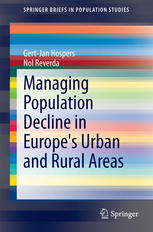

Most ebook files are in PDF format, so you can easily read them using various software such as Foxit Reader or directly on the Google Chrome browser.
Some ebook files are released by publishers in other formats such as .awz, .mobi, .epub, .fb2, etc. You may need to install specific software to read these formats on mobile/PC, such as Calibre.
Please read the tutorial at this link: https://ebookbell.com/faq
We offer FREE conversion to the popular formats you request; however, this may take some time. Therefore, right after payment, please email us, and we will try to provide the service as quickly as possible.
For some exceptional file formats or broken links (if any), please refrain from opening any disputes. Instead, email us first, and we will try to assist within a maximum of 6 hours.
EbookBell Team

4.4
52 reviewsThis book explores the challenges population decline presents for Europe’s urban and rural areas. It features recent demographic data and trends not only for Europe as a whole, but also for selected countries, and compares growth and shrinkage from a historical as well as a theoretical perspective. In addition, the book critically reviews relevant notions from geography, sociology, and public administration. It also identifies good practices across Europe.
Throughout, theories are complemented with concrete examples and proposals are made on how to tackle demographic shrinkage in European cities and villages, from attempts to attract new residents to the countryside to innovative ways to guarantee public services. In the end, the authors conclude that solving the challenges caused by population decline require novel ways of thinking and provide answers to such future-oriented questions as: how to ensure the quality of life in an environment that is inhabited by fewer and older people, what investments are needed, and which actors should be involved.
Managing Population Decline in Europe’s Urban and Rural Areas offers detailed coverage of an underestimated and complex governance issue that asks for solutions in which citizens have to play an important role. It concludes that shrinkage requires a rethink of the specific tasks and roles of government and presents a way forward based on initiatives currently underway throughout Europe. The book will be a valuable resource for population policy makers as well as students and researchers interested in human geography, urban planning, rural development, European studies, public administration, and other social sciences.